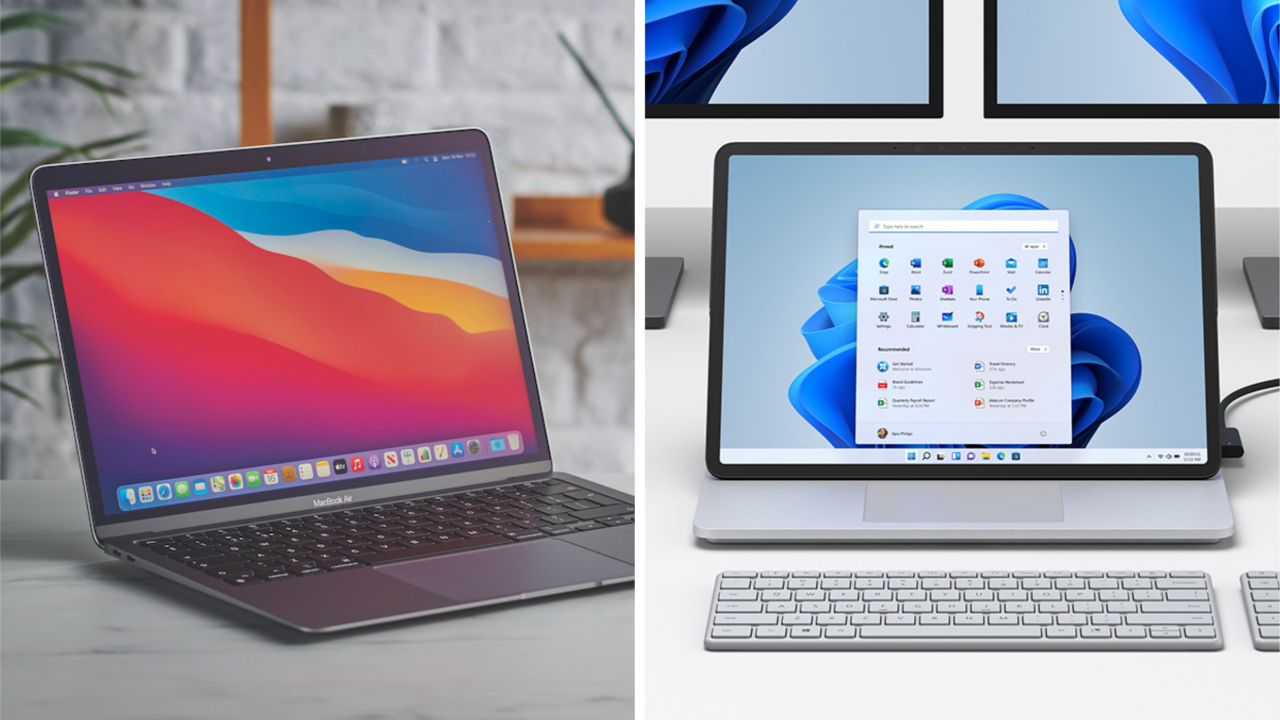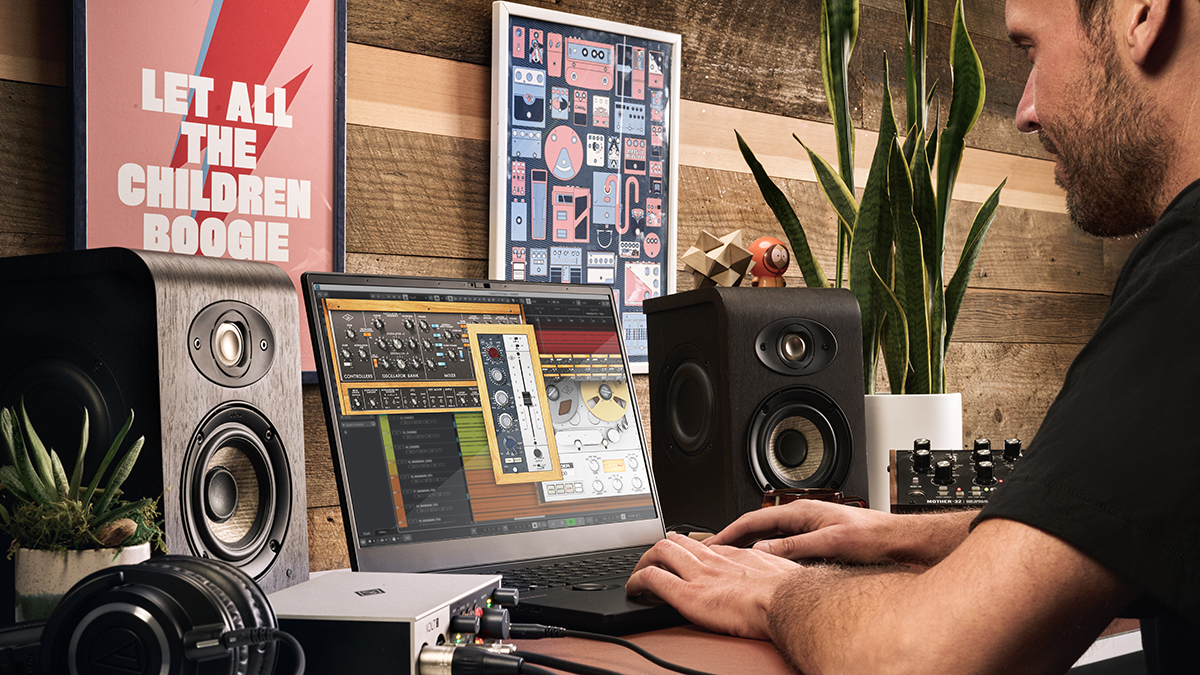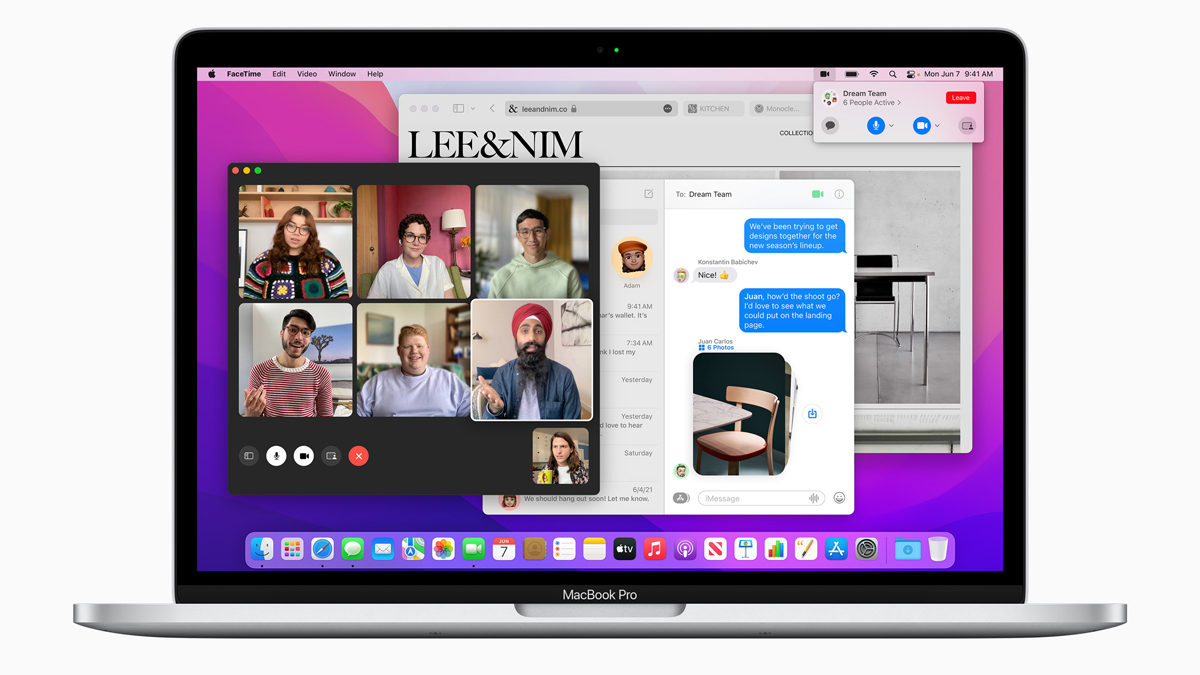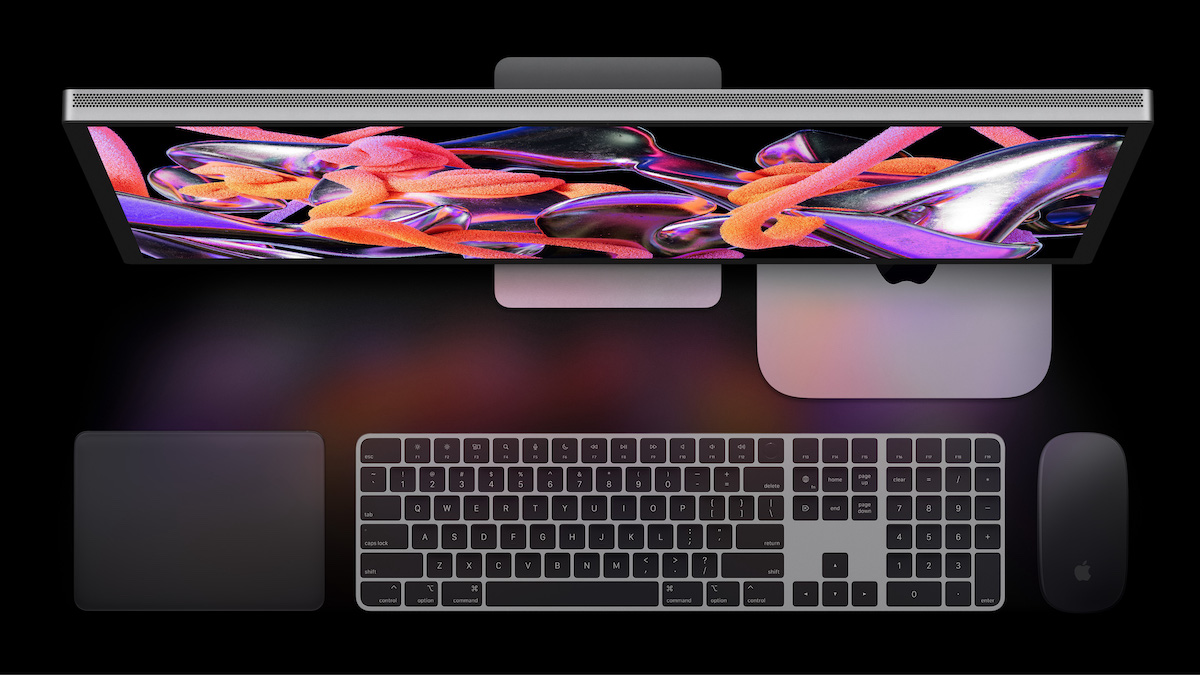Windows vs macOS for music production: Which is right for you?
The operating system battle rages on! But what are the key differences in 2024? We take a deep dive into the pros and cons of both

For as long as home music production has been a thing, the debate over whether an Apple or Windows studio is better has raged on. Of course, ‘better’ is entirely subjective, which is why there has never been a definitive argument for or against either platform. We all have our opinions, often entrenched and based on personal experience, that no forum post or internet debate will change our mind on. Yet here, in 2024, it is still worth reminding ourselves how fortunate we, as musicians and producers, are to have options with these kinds of things. Neither platform is perfect, yet the goal remains to put the power of a fully-fledged, advanced musical toybox into our hands. And at that, surely, both succeed.
Has the story changed though? The old cliche of Windows being for workers and Mac being for creatives has surely dissipated now. Windows staples like the Surface Laptop and Dell XPS line-up have done much to demonstrate that those staid office machines can be as beautifully designed and run all the same software as their more traditionally attractive Apple counterparts. Yet with its move to take the production of its CPU in-house, Apple has stolen the march on Windows machines thanks to its Macs' now lighting-fast operation and gargantuan battery life.
In this article, we’re going to examine the landscape in 2024. Do producers still have the same laundry list of requirements nowadays? Is there a clear winner out of MacOS and Windows? Does there have to be any more? Let’s dive in.
MacOS vs Windows: Functionality

The needs of the modern music producer are many and varied. For some, a computer serves the purpose of essentially being a glorified tape machine. Recording, adding effects, tweaking sounds and capturing perfect takes happens exclusively outside of the box, with the laptop merely being the place where you visually mould your arrangements. For others, the laptop or PC is everything. From using MIDI and software instruments to manipulating sample libraries, without our computers we’re nothing. Maybe, for you, the truth is somewhere in the middle. What it highlights, however, is that we need our computers to offer us versatility. Pure power when we need it, and to disappear into the background when we don’t.
It used to be that you could rely on Apple’s machines to ‘just work’. It’s a simple principle, which gave us one of the best marketing slogans of all time. Thanks to class-compliant drivers, Mac users could plug whatever piece of external hardware into their system, safe in the knowledge they wouldn’t need to delve into myriad menus and system settings to make their toys work. As someone who uses both systems extensively, for work, pleasure and something in between, I’d love to say that’s not the case any more, and the modern Windows systems function as elegantly as MacOS of old, but unfortunately, it kinda still is.

Case in point: in my infinite wisdom, I had put together a slightly convoluted system whereby I needed to direct audio in from one interface, and out through another. Because? Reasons. With the MacBook Air I use daily, this was simple. I created an aggregate device, and around six clicks later it all worked immediately. On the XPS machine I was testing, I ran up multiple dead ends until a friendly forum member pointed out that no, in fact, this could not be done easily. The inherent limitations of ASIO drivers mean Windows can only recognise one in/out audio device at a time, so you need to choose one. I recalled reading the superb guide on this very site to using Linux for music production and explored employing the Jack Audio app, but this seemed like a lot of effort, taking me further away from music production and into the realms of software engineering. My point here, despite using a rather simplistic argument, is that still in 2024, you can rely on a Mac to carry out basic (and occasionally esoteric) actions without it causing you to go forum diving.
In fairness, the lines elsewhere are much more blurred. I can happily plug my Ableton Push 3 into either machine, and it will instantly pick it up and I can begin tinkering. Class compliance with audio interface drivers means it’s rarely the headache it would have been in days gone by - providing you use a single interface (which most normal people will do…).
Get the MusicRadar Newsletter
Want all the hottest music and gear news, reviews, deals, features and more, direct to your inbox? Sign up here.
Maybe it comes down to what you’re trying to achieve, and with which machine you’ll do the bulk of your creative work. If it’s a production machine first, and an email/internet/work machine second, then I’d still say go with a Mac. If, however, your main use case is not audio production, then the answer is more in the eye of the beholder.
MacOS vs Windows: Cost

Cost is, and always will be, a huge determining factor when it comes to choosing the right operating system for music production. Apple has the reputation it does because its machines are expensive. No getting away from that. Sure, you get the benefits we’re outlining, along with the cutting-edge design and everything else, but you’re going to pay for the privilege. On the other hand, Windows, because it has multiple vendors producing the hardware, offers much more in the way of choice. Every budget is catered for. So that’s that settled then, right? Well… not really.
Business folk like to talk of something called ‘opportunity cost’. It takes any discussion of cost, or time, and broadens the topic to take in certain adjacent factors that will impact the bigger picture. So, for example, imagine spending a large amount on a mid-range Apple MacBook Pro. Your wallet takes a hit, and you’re expecting big things. After a short period, you’re using the machine like you would any other and you don’t notice any huge, immediate benefit. But in the medium term, that mid-range MacBook Pro is still performing at par with higher-spec Windows equivalents, with no immediate signs of needing an upgrade. In the longer term, you gain a far higher resale value when you decide to trade it in, because of the strength of Apple’s brand.
The result, arguably, is that despite the higher up-front cost, the actual total cost of ownership of the MacBook is probably less than if you’d opted for a slightly cheaper mid-range Windows machine, which required the RAM upgrading after two years, and a new graphics card a couple of years later, and then had next to no resale value after four years.
It’s not that either option is somehow right or wrong. But the fact is that the price you see on the sticker in the store is rarely a reliable metric when it comes to discussing how the bigger picture will pan out. Go in with your eyes open.
MacOS vs Windows: Other considerations

Aside from performance and cost, there are other areas to consider. If yours is a portable set-up, then the size and weight of the machine are a factor, along with the battery life. Apple machines with M1/M2 or M3 processors frankly blow the vast majority - if not all - modern Windows laptops out of the water when it comes to how long you can function away from power, and all of this is tied into MacOS. Design is a closer call - you’d be forgiven for thinking that Dell had taken more than a few cues from Apple with the visual stylings and aesthetics of the XPS range. That said, the MacBook Air range is still the marque to beat when it comes to lightness and portability.
In most other areas, it’s harder to make an objective argument for or against Windows or Macs. Both will delight you with tools and workflows geared entirely towards simplicity and productivity. Both will annoy you at certain points with requests to update, or mid-session crashes. Both will, however, provide the platform for many years of music-making, and both have helpful online communities to guide you through those sticky ‘how do I do that?’ moments you’ll occasionally find yourself in.
Conclusion
To conclude, there is no right or wrong answer to the question of which operating system is best for music production. There are simply too many variables, wrapped up in ‘eureka’ user experiences and past traumas, for there to be a definitive ‘right’ answer. Perhaps, therefore, the question isn’t which operating system should you be using, but rather which type of operating system user are you.
Do you mind getting under the hood, and tweaking settings to your specific needs? Windows provides a great platform for this, but it’s not without niggles. Or are you someone who just wants to plug things in and make music, and doesn’t mind paying for the simpler workflow? MacOS will get you where you want to be, maybe quicker than Windows would, but your upfront cost is going to be considerable.
Whichever path you choose, there’s a laptop, PC and operating system to meet your needs. And if all that fails, there’s always Linux.
Related buyer's guides
- Upgrade your rig with out pick of the best laptops for music production
- … and the best PCs for music production
Chris Corfield is a journalist with over 12 years of experience writing for some of the music world's biggest brands including Orange Amplification, MusicRadar, Guitar World, Total Guitar and Dawsons Music. Chris loves getting nerdy about everything from guitar and bass gear, to synths, microphones, DJ gear and music production hardware.










